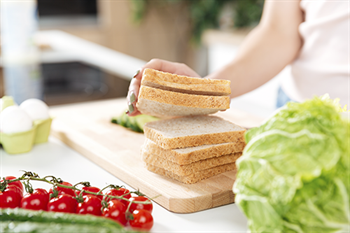
Maple cutting boards are both useful and beautiful and, like any other item in the kitchen, they need some care and maintenance. If you have little knowledge about proper board use and care, the following wood cutting board tips will help you out.
Unlike plastic cutting boards, hardwood cutting boards should not be cleaned in a dishwasher. The intense heat and water exposure can damage the board, leading to unsightly warping and wood splitting.
The best way to clean your maple board is to wash it with warm, soapy water. Ensure to use food-safe products to clean your board. Let it dry standing up. Avoid drying it in a flat position, as wood warps when one side of the board doesn't dry.
Oiling cutting boards is an essential step many forget to take. This helps prevent moisture and bacteria from seeping in and protects from vigorous knife usage. Finally, it can prevent board warping, which happens when the board is repeatedly exposed to water and dried.
You should oil and protect your cutting board at least once a month or if the board begins to feel dry. For the best results, make use of food-grade mineral oil, coconut oil or beeswax-based creams.
Use a small towel or paintbrush to apply the oil so that the surface is covered on both sides. Wipe off excess oil with a dry cloth and leave the board to dry in an upright position overnight.
While cutting boards are made to withstand frequent knife usage, some nicks and tears can occur along the way. Unfortunately, these become entry spots for bacteria, moisture, and other harmful substances. Sanding your cutting boards is an important step you can't forget!
Using a piece of sandpaper between 60 and 120-grit, sand along the grain of the wood until the surface is free from cuts and scratches. Clean the surface with a rag, followed by repeating the process with a 220-grit sandpaper to smoothen the board. Wash it with warm soapy water and let dry in an upright position.
While wood cutting boards can be used for slicing and dicing, it's better to use separate boards for the different food items you're preparing. While hardwood cutting boards are the safest material to use, ensure to prevent cross-contamination by avoiding using the same board.
By following these tips on how to care for a wood cutting board, you can guarantee the long lifespan of your maple cutting board. Even better, get three boards to ensure food safety in your kitchen.